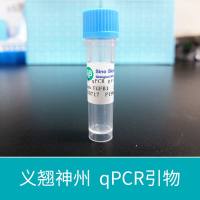The polymerase chain reaction (PCR) is a powerful method for amplification of DNA segments between two regions of known sequences (1 , 2 ). In standard PCR, sequences bound by two unique oligonucleotide primers can be exponentially amplified. However, it is a prerequisite to know the DNA sequence at both ends of the region of interest. To amplify regions of unknown sequence, methods such as inverted PCR (3 ), Alu PCR (4 ), and rapid amplification of cDNA ends (RACE) (5 ), also known as anchored PCR (6 ) or one‐sided PCR (7 ), have been developed. These methods require several enzymatic manipulations of DNA that are either tedious or only suitable for certain conditions. While using standard PCR for in vitro amplification of 5′ untranslated cDNA sequence of acidic fibroblast growth factor (aFGF) mRNA, we observed amplification of a second specific fragment in addition to the expected fragment. Sequence analysis showed that the additional fragment resulted from binding of the 5′ primer to a region that has an imperfect match to the actual primer binding site. Comparing the sequences of the primer (HBGF 1201) and the binding site revealed that only eight out of 32 nucleotides matched (Fig. 1A ). Those eight nucleotides cluster in the 19 nucleotides at the 3′ end of the primer and therefore provided priming that allowed for a specific amplified product. With this observation, we reasoned that a single primer could be used, binding both to the complementary sequence






